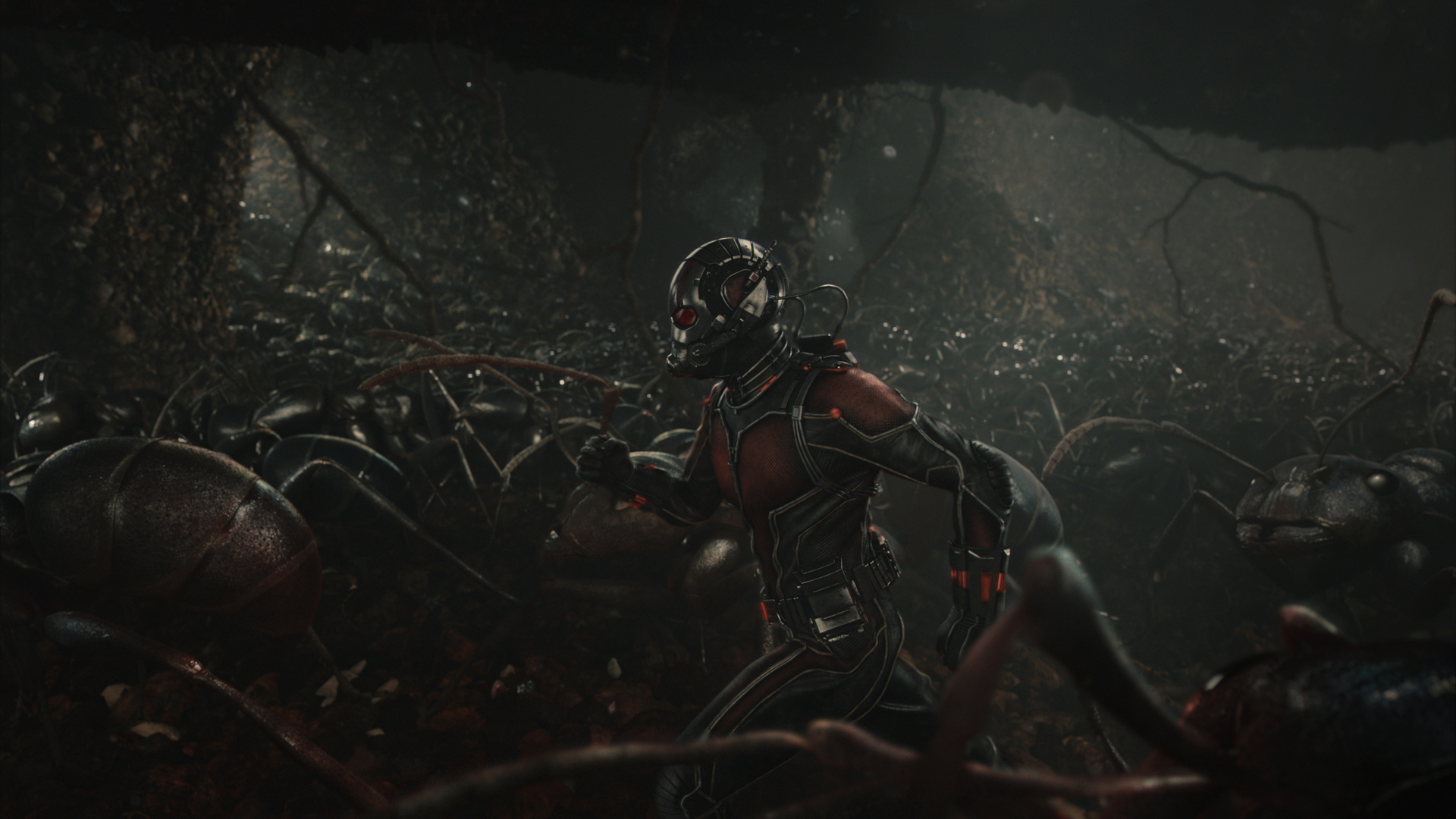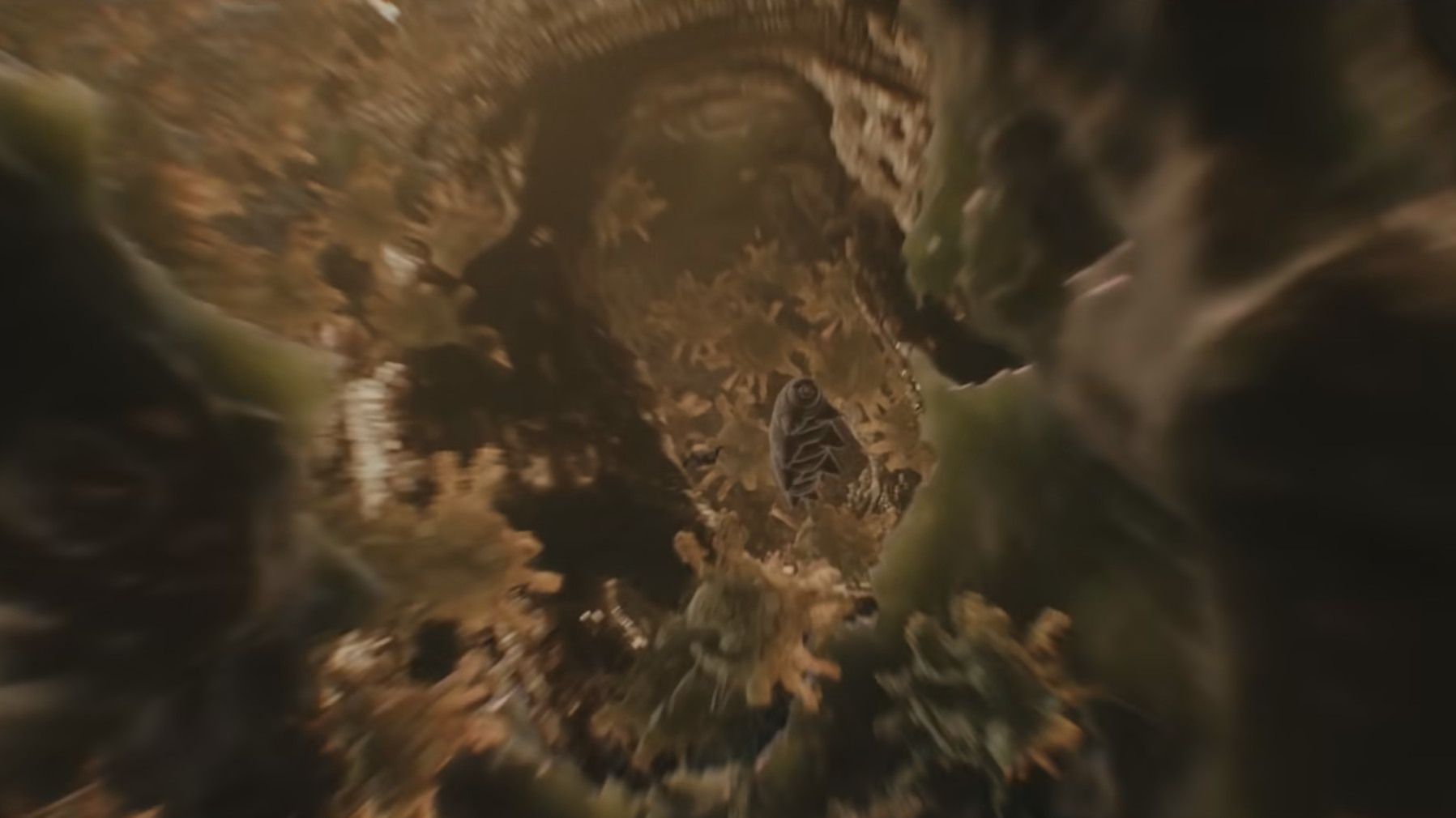How realistic is Ant-Man’s quantum science?
Marvel’s Ant-Man movies have brought a deeper exploration of quantum science into the Marvel Cinematic Universe, but how realistic is it really?

Premiering in 2015 with Paul Rudd as the titular shrinking superhero, Marvel’s Ant-Man brought some more of the science-driven powers to the Marvel Cinematic Universe. Ant-Man’s abilities include shrinking down to once thought impossible sizes with the use of a specialized suit, commanding ant species, and being able to grow to giant sizes. The majority of these powers are centered around genius scientist Hank Pym’s “Pym Particle,” a fictional exotic group of subatomic particles that allows an object’s size and mass to be altered at will, bypassing the Square-Cube Law. How realistic can any of this actually be?
As seen in this video by Vsauce3 with Paul Rudd and Jake Roper, being shrunken down to an absurdly small size presents tons of problems. First off, the density of your body (if maintained while shrinking) would be so great that it would simply collapse in on itself due to immense pressure. Obviously, this problem is overcome by the ability of the Pym Particle to maintain the structure of a body shrunken down to impossible sizes.
The Ant-Man suit and devices that imbue Pym Particles onto anything the hockey puck-like gadget attaches to allows objects to be immediately altered in size without worrying about injury or violation of the Square-Cube Law: the physics principle discovered by Galileo Galilei that states any object that grows in size, its surface area increases by a squared factor while the volume grows by a cubic factor.
In addition, your size decrease would also mean that the sounds you make would dramatically increase in frequency with your voice outputting a wavelength of around 12 to 26 kHz, which lies outside the range of human hearing limits. So, in addition to being crushed by the immense weight of your body being contained to such a small space, you would only audibly communicate in unintelligible peeps and squeaks. Whenever Ant-Man shrinks, though, it seems like people could still hear him despite the absurd decrease in size.

If shrinking down to a small size also decreased your body’s density proportionally, then you would not be crushed. However, your ability to withstand even a slight breeze becomes nearly impossible. At the size of an ant, you would weigh a measly 0.03 g. At that weight, a wind of around 8 MPH would easily sweep you away, and a human sneeze would result in near-lethal damage with wind speeds blasting you at over 100 MPH!
Despite all this, there is an upside. The loss of weight would dramatically increase your speed at ant-like sizes. Your strides would be up to 20 times faster than normal. One of the fastest humans on the planet is Usain Bolt, with a top speed recorded at around 27 MPH. If he were the size of an ant, his top speed would reach over 540 MPH, or almost 80% the speed of sound. These speeds at times do match up with the velocity the Ant-Man and Wasp suits can do as seen in the movies and comics.
Unfortunately, there’s yet another drawback. Your metabolism at these sizes would increase to levels where a human would need to be consuming food for energy at a near-constant rate just to maintain body heat and sustenance. So, even if you could sprint to speeds at which nothing could touch you, you’d probably starve to death.

Another fantastical element of Ant-Man is the introduction of the Quantum Realm, or the space between realities. First seen in 2015’s Ant-Man when Scott Lang, the second user of the Ant-Man suit, removes the suit’s limiter to shrink down to a size beyond a safe limitation for the Pym Particle to maintain (which is smaller than even the size of atoms). As Scott shrinks smaller and smaller, while smashing through parts of Yellow Jacket’s suit, we see Scott fly through the air next to dust particles bigger than he is. And then constantly shrinking down to sizes where we see things like tardigrades (aka a water bear or moss piglet) and then into a space where everything seems to break down to a barely perceptible point. Geometry and strange images cloud the screen, and then Scott Lang is floating in a nearly pitch-black void with only blue wisps of energy lighting nearby pockets of space.
Up until the space between atoms, the imagery is actually quite accurate for what you could see. The rough textures of the dust particles and other things floating in the air seem to be based on electron microscope images captured of fine particulates, showing caverns and mountain-like areas all around. We do see a tardigrade float by as Scott shrinks smaller than a dust particle, which would indicate a size smaller than 5 microns. According to a majority of findings, the average tardigrade is about 0.4 mm in size, way larger than an average dust particle.

Later in 2019’s Avengers: Endgame the heroes all utilize a property of the Quantum Realm to manipulate space-time and travel back to different points in time to retrieve the Infinity Stones to save the universe. Obviously, just shrinking very small doesn’t actually produce time travel, and the technology that is used to develop this technique is explained away with Bruce Banner’s “techno-babble” that involves a connection between use of the Pym Particles and a specialized machine to alter space-time around them as they shrink.
In fairness to Marvel though, we've explored most of the common theories around time travel in our is time travel possible article, and several of them would require exotic particles. Pym particles are pretty exotic. At this point though, this is mostly a fictional depiction since the Quantum Realm may be linked to fantastical elements of the Marvel universe, such as magic, and impossible beings that could only be described as godlike as well.
All in all, Ant-Man’s science is a blend of fantastic elements with just enough realism to make it convincing for the average viewer. Explanations of the Pym Particle technology combined with simplified explanations of quantum mechanics and how shrinking down to such ridiculous sizes could work if there even were a way to do it to give an air of semi-realism to an otherwise fantasy type setting. The explanations, if a little rudimentary, serve an excellent purpose of giving a more rigid approach to an otherwise loosely utilized fantasy science.
As long as you don’t nitpick every little detail about how the mechanics work, the science of Ant-Man does seem to hold up. Like most movies, we don’t have to question everything all the time, and if it makes sense for the sake of storytelling and drives the plot forward, then just sit back, don’t think about it too much, and enjoy.
If you want to learn more about quantum physics, check out our article on these 10 mind-boggling facts about quantum physics.
Join our Space Forums to keep talking space on the latest missions, night sky and more! And if you have a news tip, correction or comment, let us know at: community@space.com.
Get the Space.com Newsletter
Breaking space news, the latest updates on rocket launches, skywatching events and more!










